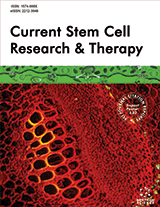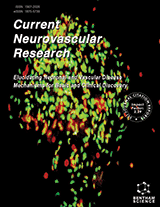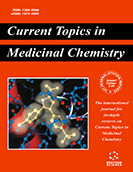Abstract
Hematopoietic stem cells (HSCs) are responsible for the production of mature blood cells in bone marrow; peripheral pancytopenia is a common clinical presentation resulting from several different conditions, including hematological or extra-hematological diseases (mostly cancers) affecting the marrow function, as well as primary failure of hematopoiesis. Primary bone marrow failure syndromes are a heterogeneous group of diseases with specific pathogenic mechanisms, which share a profound impairment of the hematopoietic stem cell pool resulting in global or selective marrow aplasia. Constitutional marrow failure syndromes are conditions caused by intrinsic defects of HSCs; they are due to inherited germline mutations accounting for specific phenotypes, and often involve also organs and systems other than hematopoiesis. By contrast, in acquired marrow failure syndromes hematopoietic stem cells are thought to be intrinsically normal, but subjected to an extrinsic damage affecting their hematopoietic function. Direct toxicity by chemicals or radiation, as well as association with viruses and other infectious agents, can be sometimes demonstrated. In idiopathic Aplastic Anemia (AA) immunological mechanisms play a pivotal role in damaging the hematopoietic compartment, resulting in a depletion of the hematopoietic stem cell pool. Clinical and experimental evidences support the presence of a T cell-mediated immune attack, as confirmed by clonally expanded lymphocytes, even if the target antigens are still undefined. However, this simple model has to be integrated with recent data showing that, even in presence of an extrinsic damage, preexisting mutations or polymorphisms of genes may constitute a genetic propensity to develop marrow failure. Other recent data suggest that similar antigen-driven immune mechanisms may be involved in marrow failure associated with lymphoproliferative or autoimmune disorders characterized by clonal expansion of T lymphocytes, such as Large Granular Lymphocyte leukemia. In this wide spectrum, a unique and intriguing condition is Paroxysmal Nocturnal Hemoglobinuria (PNH); even in presence of a somatic mutation of the PIG-A gene carried by one or more HSCs and their progeny, the typical marrow failure in PNH is likely due to pathogenic mechanisms similar to those involved in AA, and not to the intrinsic abnormality conferred to the clonal population by the PIG-A mutation. The study of hematopoietic stem cell function in marrow failure syndromes provides hints for specific molecular pathways disturbed in many diseases of hematopoietic and non-hematopoietic stem cells. Beyond the specific interest of investigators involved in the field of these rare diseases, marrow failure syndromes represent a model that provides intriguing insight into quantity and function of normal hematopoietic stem cells, improving our knowledge on stem cell biology.
Keywords: Hematopoietic stem cells, bone marrow failure, aplastic anemia, paroxysmal nocturnal hemoglobinuria, Fanconi's anemia, dyskeratosis congenita
Current Stem Cell Research & Therapy
Title: Function and Malfunction of Hematopoietic Stem Cells in Primary Bone Marrow Failure Syndromes
Volume: 2 Issue: 1
Author(s): Antonio M. Risitano, Jaroslaw P. Maciejewski, Carmine Selleri, Bruno Rotoli, Antonio M. Risitano and Jaroslaw P. Maciejewski
Affiliation:
Keywords: Hematopoietic stem cells, bone marrow failure, aplastic anemia, paroxysmal nocturnal hemoglobinuria, Fanconi's anemia, dyskeratosis congenita
Abstract: Hematopoietic stem cells (HSCs) are responsible for the production of mature blood cells in bone marrow; peripheral pancytopenia is a common clinical presentation resulting from several different conditions, including hematological or extra-hematological diseases (mostly cancers) affecting the marrow function, as well as primary failure of hematopoiesis. Primary bone marrow failure syndromes are a heterogeneous group of diseases with specific pathogenic mechanisms, which share a profound impairment of the hematopoietic stem cell pool resulting in global or selective marrow aplasia. Constitutional marrow failure syndromes are conditions caused by intrinsic defects of HSCs; they are due to inherited germline mutations accounting for specific phenotypes, and often involve also organs and systems other than hematopoiesis. By contrast, in acquired marrow failure syndromes hematopoietic stem cells are thought to be intrinsically normal, but subjected to an extrinsic damage affecting their hematopoietic function. Direct toxicity by chemicals or radiation, as well as association with viruses and other infectious agents, can be sometimes demonstrated. In idiopathic Aplastic Anemia (AA) immunological mechanisms play a pivotal role in damaging the hematopoietic compartment, resulting in a depletion of the hematopoietic stem cell pool. Clinical and experimental evidences support the presence of a T cell-mediated immune attack, as confirmed by clonally expanded lymphocytes, even if the target antigens are still undefined. However, this simple model has to be integrated with recent data showing that, even in presence of an extrinsic damage, preexisting mutations or polymorphisms of genes may constitute a genetic propensity to develop marrow failure. Other recent data suggest that similar antigen-driven immune mechanisms may be involved in marrow failure associated with lymphoproliferative or autoimmune disorders characterized by clonal expansion of T lymphocytes, such as Large Granular Lymphocyte leukemia. In this wide spectrum, a unique and intriguing condition is Paroxysmal Nocturnal Hemoglobinuria (PNH); even in presence of a somatic mutation of the PIG-A gene carried by one or more HSCs and their progeny, the typical marrow failure in PNH is likely due to pathogenic mechanisms similar to those involved in AA, and not to the intrinsic abnormality conferred to the clonal population by the PIG-A mutation. The study of hematopoietic stem cell function in marrow failure syndromes provides hints for specific molecular pathways disturbed in many diseases of hematopoietic and non-hematopoietic stem cells. Beyond the specific interest of investigators involved in the field of these rare diseases, marrow failure syndromes represent a model that provides intriguing insight into quantity and function of normal hematopoietic stem cells, improving our knowledge on stem cell biology.
Export Options
About this article
Cite this article as:
Risitano M. Antonio, Maciejewski P. Jaroslaw, Selleri Carmine, Rotoli Bruno, M. Risitano Antonio and P. Maciejewski Jaroslaw, Function and Malfunction of Hematopoietic Stem Cells in Primary Bone Marrow Failure Syndromes, Current Stem Cell Research & Therapy 2007; 2 (1) . https://dx.doi.org/10.2174/157488807779316982
| DOI https://dx.doi.org/10.2174/157488807779316982 |
Print ISSN 1574-888X |
| Publisher Name Bentham Science Publisher |
Online ISSN 2212-3946 |
 78
78
- Author Guidelines
- Bentham Author Support Services (BASS)
- Graphical Abstracts
- Fabricating and Stating False Information
- Research Misconduct
- Post Publication Discussions and Corrections
- Publishing Ethics and Rectitude
- Increase Visibility of Your Article
- Archiving Policies
- Peer Review Workflow
- Order Your Article Before Print
- Promote Your Article
- Manuscript Transfer Facility
- Editorial Policies
- Allegations from Whistleblowers
- Announcements
Related Articles
-
Mitochondrial Post-translational Modifications and Metabolic Control: Sirtuins and Beyond
Current Diabetes Reviews Determination of 7,12-Dimethylbenz[a]Anthracene in Orally Treated Rats by High-Performance Liquid Chromatography and Transfer Stripping Voltammetry
Combinatorial Chemistry & High Throughput Screening Novel and Emerging Drugs for Systemic Lupus Erythematosus: Mechanism of Action and Therapeutic Activity
Current Medicinal Chemistry Natriuretic Peptide Family: New Aspects
Current Medicinal Chemistry - Cardiovascular & Hematological Agents Endocannabinoid System: A Multi-Facet Therapeutic Target
Current Clinical Pharmacology Immunity to Bacterial Infections
Current Immunology Reviews (Discontinued) Role of Androgens in Womens Sexual Function & Dysfunction: What Have We Learned in Six Decades?
Current Women`s Health Reviews Zebrafish As a Genetic Model in Pre-Clinical Drug Testing and Screening
Current Medicinal Chemistry VEGF Signaling Regulates Cofilin and the Arp2/3-complex within the Axonal Growth Cone
Current Neurovascular Research Nitric Oxide and Schizophrenia: Present Knowledge and Emerging Concepts of Therapy
CNS & Neurological Disorders - Drug Targets Small Molecule Regulators Targeting NAD<sup>+ </sup>Biosynthetic Enzymes
Current Medicinal Chemistry Targeting Notch as a Therapeutic Approach for Human Malignancies
Current Pharmaceutical Design Multidrug Resistance: Retrospect and Prospects in Anti-Cancer Drug Treatment
Current Medicinal Chemistry Human Chorionic Gonadotropin: A Model Molecule For Oligopeptide-Based Drug Discovery
Endocrine, Metabolic & Immune Disorders - Drug Targets Application of Model-Based Approaches to Evaluate Hepatic Transporter-Mediated Drug Clearance: In vitro, In vivo, and In vitro-In vivo Extrapolation
Current Drug Metabolism New Pharmacological Approaches to the Prevention of Myocardial Ischemia- Reperfusion Injury
Current Drug Targets Advances in Drug Safety
Current Pharmaceutical Design Targeting Stem Cells-Clinical Implications for Cancer Therapy
Current Stem Cell Research & Therapy Magnetic Resonance-Based Metabolomics for Understanding Neurological Disorders: Current Status and Statistical Considerations
Current Metabolomics The Adipose Tissue as a Source of Vasoactive Factors
Current Medicinal Chemistry - Cardiovascular & Hematological Agents


























